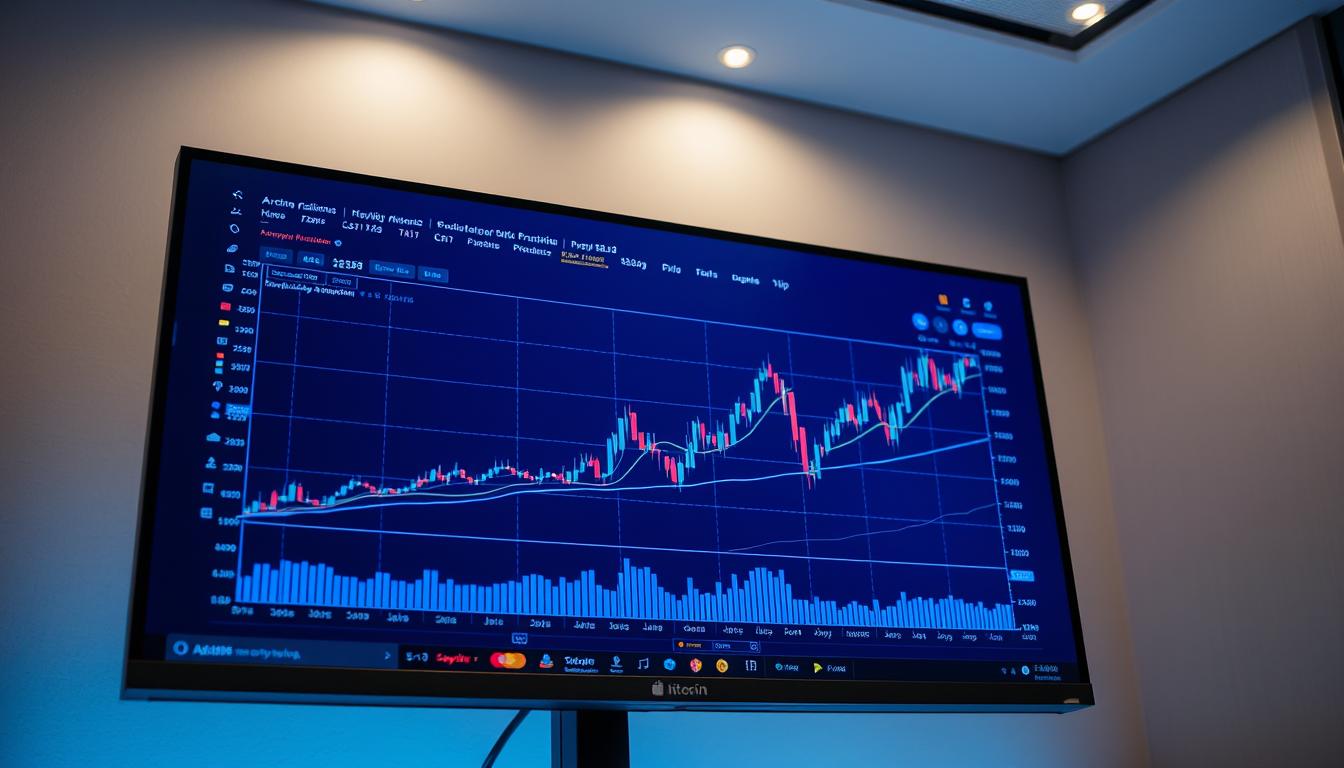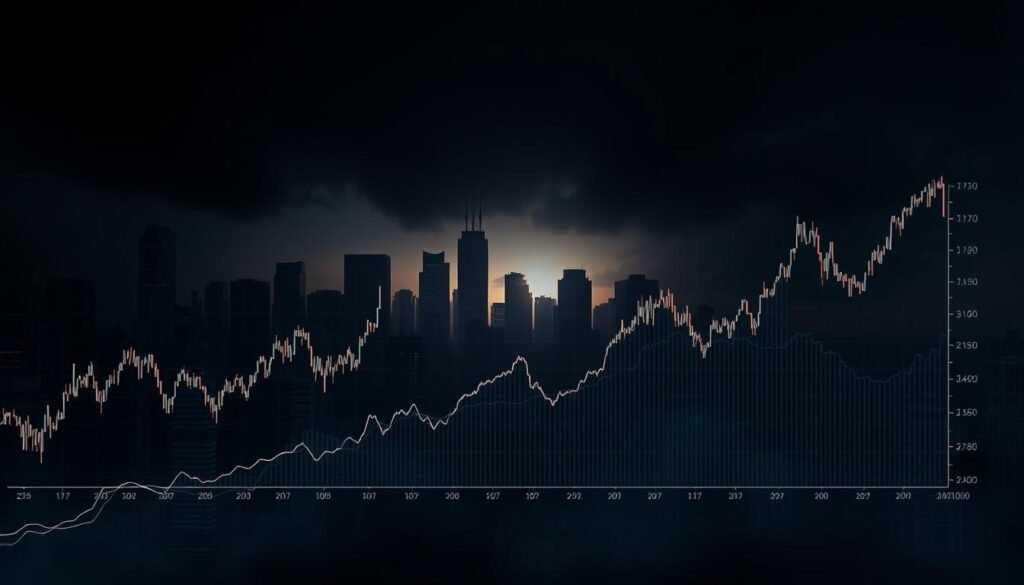Now Reading: AI Powered Cryptocurrency Price Prediction Accuracy: How Reliable?
- 01
AI Powered Cryptocurrency Price Prediction Accuracy: How Reliable?
AI Powered Cryptocurrency Price Prediction Accuracy: How Reliable?

The digital asset landscape is a whirlwind of activity. Its market operates around the clock, driven by extreme price swings and a flood of information. Investors and traders constantly seek an edge in this complex environment.
In this challenging space, artificial intelligence has emerged as a powerful tool. These systems process immense amounts of data, from news headlines to social media trends. The goal is to identify patterns that human analysts might miss, creating sophisticated forecasting models.
But how much trust should we place in these automated forecasts? The core question is their real-world reliability. While the technology shows great promise, understanding its true capability requires a close look at its performance and its limits.
This examination is crucial for anyone involved in digital asset trading. We will explore the methods behind these systems and analyze their effectiveness. The journey will reveal both the potential and the pitfalls of relying on technology for price guidance.
As noted in a recent study, AI has fundamentally reshaped financial forecasting, bringing new levels of sophistication to market analysis, especially in volatile sectors.
Key Takeaways
- The digital asset market is highly volatile and influenced by many factors.
- Advanced computer systems analyze vast datasets to spot trends.
- Forecasting models aim to provide an edge for traders and institutions.
- Reliability depends on understanding both successes and limitations.
- Real-world performance data is essential for evaluating these tools.
- Ethical considerations are part of the conversation around automated trading.
Introduction to AI in Financial Forecasting
The journey of automated market analysis began with simple rule-based programs that evolved into today’s sophisticated learning algorithms. These systems now process information at incredible speeds, transforming how professionals approach financial decisions.

The Evolution of AI in Financial Markets
Early financial tools relied on basic rules and limited data sets. Modern machine learning systems analyze massive amounts of information in real time. They identify complex patterns that traditional methods often miss.
This evolution represents a fundamental shift in market analysis. From equities to foreign exchange, these advanced tools now handle significant trading volume. Their ability to learn continuously makes them increasingly valuable.
Impits on Trading and Investment Strategies
These technological advances have revolutionized trading strategies. Professionals can now make more informed decisions based on comprehensive data analysis. Systems process both structured and unstructured information.
The result is more adaptive investment approaches. Market trends can be identified faster than ever before. This creates opportunities for optimized portfolio management and risk assessment.
Overview of Cryptocurrency Markets and Volatility
The crypto ecosystem presents unique challenges for investors due to its inherent instability and constant market shifts. Digital assets operate with extreme price swings that distinguish them from traditional financial instruments like stocks and bonds.

Historical Trends and Market Behavior
Bitcoin’s historical data reveals dramatic volatility patterns. Daily returns show standard deviations ranging from 2.29% to 4.25%, while monthly swings reached 24.77% in 2020. These numbers highlight the substantial risk in crypto markets.
Bearish periods like 2018 (-0.264% daily returns) contrast sharply with bullish years like 2020 (0.458% daily). The market’s nature involves rapid structural changes that challenge traditional forecasting methods.
Crypto markets differ fundamentally from traditional equities. They respond to regulatory announcements, technological upgrades, and social media sentiment. This 24/7 trading environment creates unique price movements.
Understanding these volatility trends is essential for evaluating any forecasting approach. The extreme swings represent both profit opportunities and significant challenges for market participants.
AI powered cryptocurrency price prediction accuracy: In Perspective
A recent analysis spanning from 2018 to 2024 offers a compelling case study in the evolution of market analysis techniques. This period witnessed significant growth and volatility in digital assets, providing a robust testing ground.

The study compared three distinct trading strategies over this timeframe. The results highlight a dramatic performance difference.
Benchmarking AI Predictions Against Traditional Models
The advanced system, which integrated multiple data streams, achieved a remarkable total return. This far exceeded the results of other methods.
This approach uses a probabilistic framework. It generates scenarios like cautious, moderate, and bullish outlooks based on historical patterns and economic factors.
The table below summarizes the key findings from the benchmarking study.
| Trading Strategy | Primary Methodology | Total Return (2018-2024) |
|---|---|---|
| Advanced System-Driven | Integrated technical, macroeconomic, and sentiment data | 1640.32% |
| Traditional Machine Learning | Standard algorithmic processing | 304.77% |
| Buy-and-Hold | Passive long-term investment | 223.40% |
This superior performance stems from processing a broader spectrum of information. The system identifies subtle patterns that simpler models might miss.
However, it is crucial to understand the limitations. These forecasting tools cannot account for sudden, unprecedented market shocks. Their strength lies in describing probable ranges, not setting exact price targets.
Comparison of AI and Traditional Machine Learning Strategies
When comparing different computational approaches to market analysis, the performance gap becomes strikingly evident. The data reveals a clear hierarchy in effectiveness among various methodologies.

Advantages of AI-Driven Techniques
Advanced systems demonstrate superior pattern recognition capabilities. They process complex relationships in market data that traditional machine learning models often miss.
This leads to more accurate timing of entry and exit points. The adaptive nature of these systems allows for real-time adjustments to changing conditions.
Traditional approaches rely on more limited feature sets. They cannot match the dynamic learning capacity of modern analytical tools.
Systematic Trading vs. Buy-and-Hold Approaches
Systematic trading strategies remove emotional bias from investment decisions. They follow disciplined rules based on weighted scoring systems.
When scores exceed specific thresholds, positions are automatically entered or exited. This systematic approach consistently outperformed passive buy-and-hold methods.
The performance difference highlights the value of active, rule-based decision making. It demonstrates how technology can enhance market participation while managing risk.
Deep Dive: Neural Networks and Advanced Methodologies
Recurrent neural networks represent a quantum leap in how computational systems understand sequential financial information. These advanced deep learning frameworks excel at processing time-series data by maintaining memory of previous inputs.
RNNs, LSTMs, and GRUs in Crypto Forecasting
Recurrent Neural Networks (RNNs) are specifically designed for sequential data processing. They detect temporal dependencies crucial for understanding price movement sequences.
Long Short-Term Memory (LSTM) networks solve the vanishing gradient problem through specialized gate mechanisms. This enables models to remember important patterns across longer time horizons.
Gated Recurrent Units (GRUs) offer similar performance with fewer parameters. They capture complex temporal relationships while remaining computationally efficient.
Ensemble Methods and Algorithmic Innovations
Beyond individual neural networks, ensemble methods combine multiple predictions for improved accuracy. Techniques like Random Forests and XGBoost create robust forecasting systems.
These approaches capture nonlinearities that simpler algorithms might miss. They represent the cutting edge of machine learning analysis for digital assets.
The rolling window methodology trains models on preceding 10-day periods with cross-validation. This prevents overfitting while maintaining real-world applicability across volatile crypto markets.
Integration of Diverse Data Sources
Modern forecasting systems gain their edge from synthesizing multiple information streams. They move beyond basic charts and numbers to include the digital pulse of the market.
This approach combines traditional financial figures with real-time public sentiment. The goal is to build a complete picture of market forces.
Combining Social Media, News, and Historical Data
Platforms like Twitter and Reddit act as live gauges for investor mood. Discussions and trends on these social media sites can signal upcoming price shifts.
Advanced analytics measure this market sentiment using tools like Google Trends. A common method tracks search interest for terms like “Bitcoin.”
When current search volume exceeds its seven-day average, it generates a positive signal. This sentiment analysis turns online chatter into usable data.
Natural Language Processing techniques scan news articles and forum posts. They extract meaningful trends from vast amounts of text.
Integrating this qualitative information with hard numbers creates a powerful model. It captures the human element driving the crypto market.
This holistic view is crucial for understanding the speculative nature of digital assets. It allows systems to react to the real-time mood of participants.
Case Study: AI-Driven Bitcoin Trading Performance
Empirical evidence from extended market observation showcases the power of disciplined, rule-based investment strategies. A comprehensive six-year examination from 2018 to 2024 reveals remarkable results for systematic approaches.
Performance Analysis and Return Metrics
The advanced system achieved a stunning 1640.32% total return during the testing period. This dramatically outperformed both traditional machine learning methods and passive buy-and-hold approaches.
Starting with $10,000 initial capital, the algorithm used weighted scoring thresholds for disciplined decision making. Positions were entered when scores exceeded 0.5 and exited when falling below -0.5.
Risk Management and Technical Evaluation
The Sharpe ratio provided crucial insight into risk-adjusted returns across different market conditions. This evaluation confirmed the strategy’s effectiveness during both bullish and bearish periods.
Daily return standard deviations between 2.29% and 4.25% highlighted substantial market volatility. The system’s weighted scoring mechanism prevented overtrading while maintaining optimal market exposure.
This case study demonstrates how systematic approaches can generate exceptional returns while managing risk effectively. The results underscore the transformative potential of modern analytical tools in digital asset markets.
Challenges and Ethical Considerations in AI Forecasting
While advanced forecasting systems show impressive capabilities, they face significant practical hurdles and ethical questions. These issues must be understood to properly assess their role in the digital asset space.
The foundation of any good model is high-quality information. Data from social media and news can be noisy or misleading. This directly impacts the reliability of the analytics and the resulting decisions.
Overfitting, Data Quality, and Market Shocks
A major technical risk is overfitting. This happens when a model learns historical datasets too well. It then fails in new, volatile markets.
Unprecedented events, like a major exchange collapse, present another challenge. These systems may lack the framework to handle such extreme volatility. Continuous validation is essential for risk management.
Another concern is herd behavior. If many traders use similar models, they might make identical decisions simultaneously. This can amplify market swings and create instability.
Ethical Implications and Regulatory Perspectives
Serious ethics questions arise about potential market manipulation. Actors with superior tools could gain an unfair advantage. This threatens the integrity of crypto trading.
As systems become more autonomous, accountability is unclear. Who is responsible for a poor automated decision causing large losses? This creates a need for clear regulatory frameworks.
Current rules have not kept pace with this technology. New guidelines are needed for transparency and investor protection. Addressing these challenges is key to responsible use.
The Future of AI in Crypto Trading
The evolution of trading technology points toward increasingly sophisticated integration between analytical systems and decentralized networks. This convergence promises to reshape how participants engage with digital assets.
Emerging trends highlight the growing synergy between computational intelligence and blockchain infrastructure. This combination could enhance security and transparency across trading platforms.
Emerging Trends and Technological Advances
Decentralized finance represents a major growth area for advanced analytics. These systems can automate complex strategies across lending protocols and yield farming opportunities.
The market has shown rapid adoption of these tools. In 2025, the valuation of automated trading agents surged 29% to over $31 billion within weeks.
Performance data demonstrates significant advantages. Advanced systems achieved 15-25% better results than manual traders during volatile periods. Some cases showed 25% monthly returns on modest investments.
Future developments include quantum computing applications and improved sentiment analysis. These technology advances will make trading smarter and more accessible.
The democratization of sophisticated tools levels the playing field between institutional and retail investors. This represents a fundamental shift in crypto trading dynamics.
Conclusion
The journey through various analytical approaches highlights both remarkable potential and important limitations. Advanced systems demonstrated superior performance in backtested scenarios, achieving returns that significantly outpaced traditional methods.
These strategies excel by processing diverse data sources, creating comprehensive market understanding. However, even sophisticated models cannot eliminate the inherent unpredictability of digital asset trading.
The technology serves best as a decision-support tool, combining algorithmic precision with human judgment. Responsible implementation requires disciplined risk management and realistic expectations about capabilities.
This analysis confirms that while artificial intelligence has transformed price prediction, success depends on balancing technological advantages with fundamental investment principles.
FAQ
How accurate are machine learning models for predicting crypto market prices?
The reliability of these models varies greatly. They analyze historical data, market trends, and sentiment from news and social media. While they can identify patterns, the inherent volatility of digital asset markets means predictions are probabilistic, not certain. Their performance depends heavily on data quality and the specific learning strategies employed.
What is the main advantage of using artificial intelligence over traditional analysis?
A key benefit is processing power. AI and deep learning systems can analyze massive datasets—like trading volume and social media sentiment—much faster than humans. This allows for identifying complex patterns and making data-driven decisions that might be missed by conventional technical analysis, potentially improving trading strategies.
What risks are involved with relying on AI for crypto trading?
Significant risks include overfitting, where a model performs well on past data but fails with new market movements. Sudden market shocks or “black swan” events can also render predictions useless. Strong risk management is essential, as these tools should aid decision-making, not replace sound judgment and an understanding of market behavior.
Can neural networks like LSTMs effectively forecast Bitcoin’s price movements?
Advanced methodologies like Long Short-Term Memory (LSTM) networks are popular for time-series forecasting. They are designed to recognize long-term dependencies in historical data, which can be useful. However, their effectiveness is still challenged by the market’s unpredictable nature and external factors like regulatory news, making absolute accuracy difficult to achieve.
How do social media and news sentiment impact AI price predictions?
Sentiment analysis is a major component. By processing data from platforms like Twitter and news outlets, these models gauge public mood. Positive sentiment can correlate with buying pressure, while negative news can signal a drop. Integrating this analytics with historical price data aims to create a more holistic view of potential market trends.
What does the future hold for AI in cryptocurrency trading?
The field is rapidly evolving. Expect more sophisticated deep learning models and algorithmic innovations that better handle market volatility. The integration of alternative data sources and improved real-time analytics will likely make these tools more nuanced. However, they will remain aids for risk management and strategic planning rather than crystal balls.















